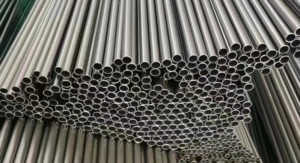Among various alloys, Hastelloy B2 and Hastelloy B3 stand out as two highly regarded and widely used materials. Both Hastelloy B2 and Hastelloy B3 belong to the family of nickel-molybdenum alloys, renowned for their excellent corrosion resistance in a wide range of environments. However, despite their similarities, there are distinct differences between Hastelloy B3 and B2 alloys that make them suitable for different applications.

What Are the differences between Hastelloy B3 and B2?
Firstly, let’s delve into the compositional nuances. Hastelloy B2 is primarily composed of nickel, molybdenum, and chromium, with chromium playing a crucial role in enhancing its corrosion resistance. On the other hand, Hastelloy B3 has a similar nickel-molybdenum base but with a reduced chromium content and a higher molybdenum content. This compositional difference significantly impacts their corrosion resistance characteristics. Hastelloy B2 exhibits excellent resistance to oxidizing agents and reducing acids, while Hastelloy B3 demonstrates superior resistance to reducing environments and certain non-oxidizing acids.
Moving on to their mechanical properties, Hastelloy B2 possesses good ductility and toughness, allowing it to be easily formed and welded. Its tensile strength and yield strength are also quite impressive, making it suitable for various structural applications. Hastelloy B3, on the other hand, is renowned for its exceptional high-temperature strength and resistance to embrittlement at elevated temperatures. This makes it ideal for use in high-temperature corrosive environments where maintaining mechanical integrity is crucial.
When it comes to welding, both Hastelloy B2 and Hastelloy B3 can be welded using conventional methods. However, Hastelloy B3 offers superior weldability due to its lower tendency to form harmful intermetallic phases during welding. This ensures that the welded joints maintain the same excellent corrosion resistance and mechanical properties as the base metal.
Furthermore, the processing and fabrication characteristics of these alloys also differ. Hastelloy B2, with its good ductility, can be easily formed into complex shapes using various metalworking techniques. On the contrary, Hastelloy B3, while still capable of being formed and machined, requires slightly higher forces and more robust cutting tools due to its higher hardness.
Lastly, let’s discuss their applications. Hastelloy B2 finds widespread use in chemical processing plants, pulp and paper mills, and other industries where resistance to oxidizing acids and oxidizing agents is crucial. Its excellent corrosion resistance and weldability make it a reliable choice for various equipment and piping systems. On the other hand, Hastelloy B3’s superior resistance to reducing environments and non-oxidizing acids positions it as the preferred material for applications such as sulfuric acid production, pickling operations, and other processes involving highly corrosive reducing media.
Conclusion
In conclusion, Hastelloy B2 and Hastelloy B3, while sharing similarities in their nickel-molybdenum base and excellent corrosion resistance, exhibit distinct differences in their composition, mechanical properties, weldability, processing characteristics, and applications.
Thank you for reading our article and we hope it can help you to have a better understanding of the differences between Hastelloy B3 and B2. If you are looking for Hastelloy B3 and B2 suppliers and manufacturers online now, we would advise you to visit Huaxiao Alloy.
As a leading supplier of Hastelloy alloys from Shanghai China, Huaxiao Alloy offers customers high-quality Hastelloy products such as Hastelloy B3, Hastelloy B2, Hastelloy C4, Hastelloy C22, Hastelloy C276, and Hastelloy C2000 at a very competitive price.



